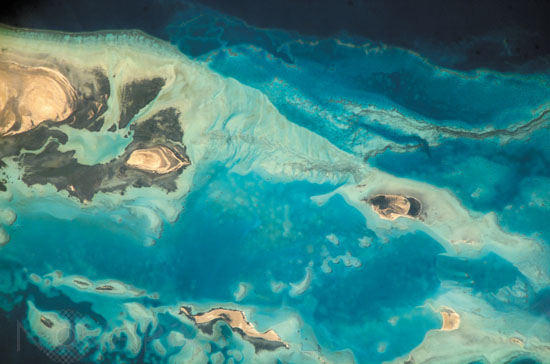Photo Agency - Astronomy - Space - Nature

Al Wadj Bank, Saudi Arabia
author: Nasa/Novapix
reference: t-afara-00006
Image Size 300 DPI: 25 * 17 cm
Saudi Arabia boasts the most coral reefs of any Middle Eastern country, as it includes coastline along both the Red Sea and the Gulf of Arabia. This high-resolution astronaut photograph shows part of the Al Wadj Bank, located along the northern Red Sea coast. Despite the relatively high salinity of Red Sea water, approximately 260 species of coral have been documented in the region. Large tracts of the Saudi Arabian coastline are undeveloped, and reefs in these areas are in generally good ecological health. However, reefs located near large urban centers such as Jeddeh have suffered degradation due to land reclamation (dredging and filling), pollution, and increased sediment runoff from land.
The Al Wadj Bank (a bank is an underwater hill) includes a healthy and diverse reef system, extensive seagrass beds, and perhaps the largest population of dugong--a marine mammal similar to the North American manatee--in the eastern Red Sea. The portion of the Bank in this image illustrates the complex form and topography of the reef system. Several emergent islands (tan) are visible, surrounded primarily by dark green seagrass; the largest is at top left. Only the islands are above the waterline; over the reefs, the water color ranges from light teal (shallow) to turquoise (increasing depth). The southern edge of the reef is well defined by the deep, dark blue water of the Red Sea (top).
Image taken from the international space station (ISS) in december 2007.
Keywords for this photo:
2007 - CORAL - EARTH - EARTH FROM SPACE - EXPEDITION 16 - MIDDLE EAST - RED SEA - SAND - SAUDI ARABIA - SEA - WATER -
Contact : Stéphane Aubin +33-(0)9-51-26-53-76
© Novapix - All rights reserved


